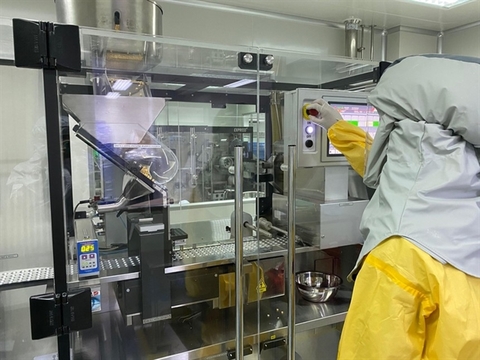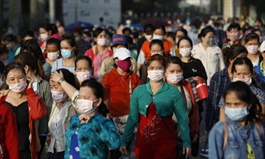CPI below four percent, a feasible goal
CPI below four percent, a feasible goal
Despite Covid-19’s heavy impacts on the socioeconomic situation as well as people’s lives in many localities, the goal of curbing the consumer price index (CPI) growth below four percent this year is feasible given the timely guidance of the government and relevant authorities. Vietnam Economic News’ Nguyen Hoa spoke about this issue with Nguyen Thi Huong, Head of the General Statistics Office of Vietnam.

Nguyen Thi Huong, Head of the General Statistics Office of Vietnam |
The CPI grew 1.79 percent in the first eight months of this year compared with the same period in 2020. Could you elaborate?
The CPI grew 0.25 percent in August 2021 compared with July, 2.51 percent compared with December 2020 and 2.82 percent compared with August 2020. In the first eight months, the index grew 1.79 percent year-on-year, the lowest CPI growth rate in the 2016-2021 period.
CPI growth in the first eight months was attributed to increases in domestic prices of petrol, oil and gas, education services, rice, and housing maintenance materials such as cement, iron, steel and sand.
Factors lowering CPI growth in the first eight months include decreases in prices of food and government support packages for people and production facilities affected by Covid-19, including electricity prices and bill reductions offered by Vietnam Elecricity.
Travel restrictions applied to prevent the spread of Covid-19 also led to drops in prices of rail and air tickets as well as tour packages.
Despite low CPI growth in the first eight months, Vietnam is said to face high inflation risks in late 2021 and 2022. What do you think should be done to achieve the goal of curbing annual CPI growth below four percent?
Covid-19 complications in many localities have heavily affected the socioeconomic situation as well as people’s lives. However, under the government’s timely guidance, synchronous measures have been taken in all sectors and at all levels to prevent the spread of the pandemic and stabilize market prices. Therefore, I believe the goal of curbing 2021 CPI growth below four percent is absolutely feasible.
In my opinion, inflation will remain controllable until the end of 2021, but increases in production material prices and efforts to promote economic recovery through loosening fical and monetary policies will bring about inflation risks in 2022. In order to curb inflation in a sustainable manner, the General Statistics Office of Vietnam proposed that ministries, sectors and localities concentrate on the following six measures:

Increased manufacturing capacity of major economic sectors is crucial |
First, balancing supply and demand to ensure stable prices of essential consumer goods and services; continued development of supply-demand connection and trade promotion activities; deployment of demand stimulus programs to stimulate domestic consumption and sale of goods.
Second, the Ministry of Industry and Trade and the Ministry of Finance should keep a close watch on global petroleum prices and use the price stabization fund appropriately to minimize the impact of petroleum price increases on CPI.
Third, domestic production of major input materials such as steel, iron and construction materials must be acclerated, prioritizing the domestic market over exports. Controls should be tightened to ensure stable prices of these products. Any violations should be dealt with strictly to prevent unreasonable price increases.
Fourth, cattle, poultry and aquatic animal feed prices need to be stabilized. Animal feed producers should maximize the use of domestic materials instead of imported materials in order to reduce production costs.
Fifth, the State Bank of Vietnam should apply flexible monetary policies to simultaneously control inflation and help ease difficulties for businesses and people affected by Covid-19.
Sixth, the Ministry of Information and Communications should coordinate with other ministries and sectors to disseminate information about price management, especially prices of goods that directly affect people’s lives. Along with publicizing information about prices, it is necessary to increase inspection and supervision in order to prevent false rumors that raise consumer anxiety and destabilize the market.





















